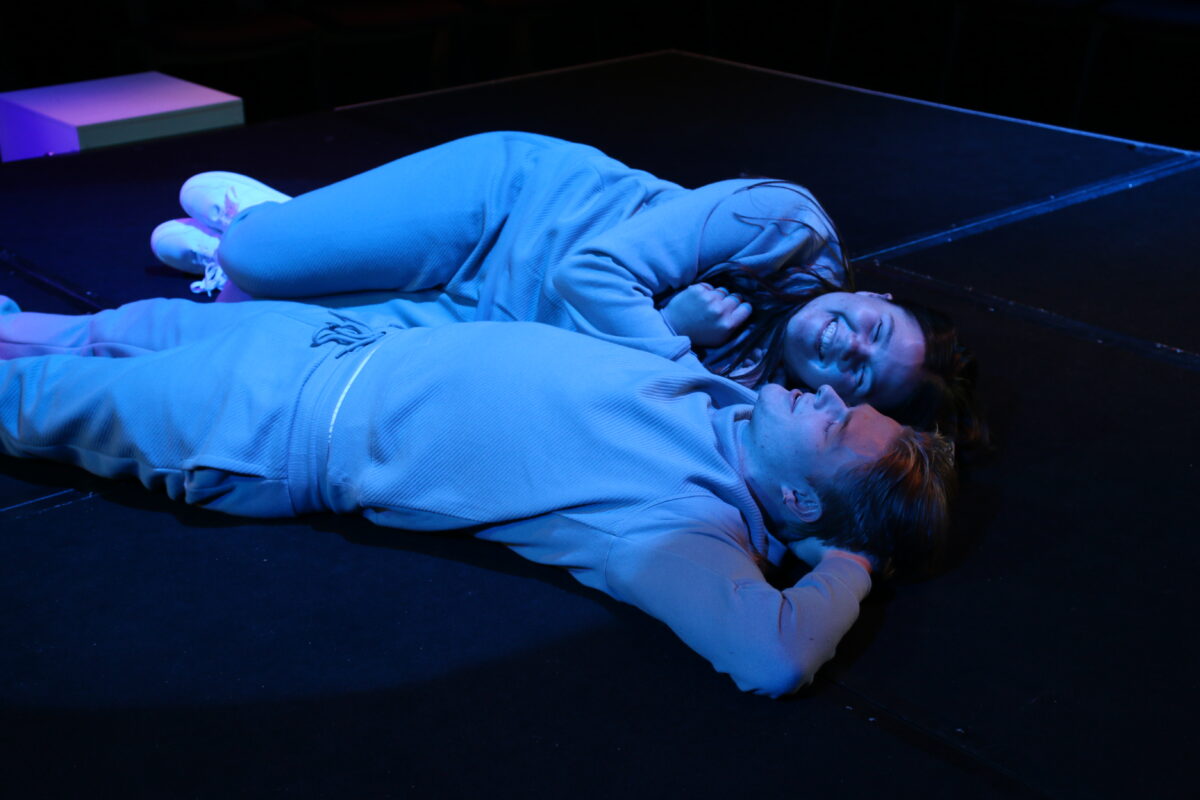National University Theatre Society’s (NUTS) production of The Effect, silenced the audience both during and after the show with its breathtaking illustration of the human experience in heightened circumstances.
Lucy Prebble’s The Effect follows two protagonists entering a four-week clinical antidepressant drug trial. The pair grapple with the nature of the trial, wondering if their sudden desires are true love or merely a side-effect of the drug.
The decision by Director Paris Scharkie to open the NUTS season with this heart wrenching drama was an inspired choice. Staged as a theatre-in-the-round, the audience was truly immersed, experiencing the highs and lows alongside Connie and Tristan. The simplistic technical proficiency of the show left the audience with questions about the efficacy of drug trials and whether emotions can be manipulated by chemical compounds propagated by pharmaceutical companies.
With only four members of the cast, there was nowhere to hide — especially considering they were on stage the entire time. Fortunately, there was no need. Eli Powles’ fast-paced and sharp Tristan brought the lighter moments, making the contrast in his moments of crisis more poignant. Tash Lyall’s Connie drove the story, with the highs and lows of her character truly showing her incredible range. A testament to the creative team and the pair, their chemistry could not have been questioned by the audience.
Just as Lyall’s performance showed her range, so too did Amy Gottschalk’s Dr Lorna James. Her astute clinical professionalism contrasted with a deep psychological turmoil brought the character to life, with her Act Two monologue reinforcing Gottschalk’s versatility. Another monologue that demonstrated the talent of this cast was the Ted Talk-style monologue of Isaac Sewak’s Toby Sealey. The sudden shift in pace provided a shining moment for Sealey, who was otherwise under-utilised.
The highlight of the show for both of us came at the end of Act 1. Scharkie’s direction coupled with Kathleen Kershaw’s movement coaching narrated its own story of a couple in the early-stages of love. Individual freeze-frames mixed with effective lighting and the chemistry of Powles and Lyall illustrated through movement the small-moments in a developing relationship. Ending Act 1 with this masterpiece meant the intermission allowed audiences a chance to sit with the dopamine produced alongside the uncomfortable knowledge the play was about to intensify. The return of the freeze-frames in the medical episode was another piece of brilliant direction, portraying the chaos of what was occurring. Utilising this directorial style in a drastically different situation complemented the earlier scene.
Despite the simplicity of the set, the utilisation of innovative lighting and technology transformed the often-barren space of Kambri Theatre into an immersive clinical experience. Watching Marty Kelly and Charlotte Harris’ lighting design it was evident that unlike many other shows, this design had been well thought through, with a clear understanding of the script, a testament to the amount of work that must have gone into this part of the show. Not only were standard overhead lights utilised, but also LED lights surrounding the stage, multiple projectors, a glowing tablet and two light-boxes sitting on the stage. The sheer amount of coordination that was required and went off without a hitch on opening night was masterful.
The only improvement that could have been made to this show was the sound design. Reading the program and hearing there would be an original score sparked our interest. Unfortunately, we were left slightly disappointed and unsure where the original score was. What sound was utilised didn’t often lessen the atmosphere of the show, but paled in comparison to the proficiency of the rest of the production.
Similarly, the costuming was simplistic yet effective. It did not detract and fitted its purpose for this show, however was not of particular note. Regardless, costuming was not a crucial part of this play, allowing the audience to focus on the raw performances of the actors, however, played its role in ensuring the character’s ease of movement.
As a theatre-in-the-round show, the stage was raised in the centre reinforcing the immersive experience. Rather than a stand-alone set, the cast utilised white wooden cubes to create the scenes. The seamless transitions of the movement of the blocks by the cast was both well-directed and well-rehearsed. Whilst limited props, those used were instrumental, with a highlight being the jellified brain dripping with goo.
Another area of improvement was the hanging and centring of the projectors at either end. In comparison to the rest of the well-done set, it looked tacky and rushed. Nonetheless, the projectors added small touches – such as the counting down from intermission and dosage sizes – reinforcing how well thought through this play was.
Overall, this did not feel like a show that had been put on in seven weeks. The attention to detail and overall collaborative effort helmed by Scharkie made it seem as though she had been working on this show for years. We attended opening night, which was not packed, and hope more people had the opportunity to see this incredible show — we know we certainly raved about it to friends. If this is how NUTS is opening their 2024 season, we are very excited to see their upcoming shows.
Rating 4.8/5
We acknowledge the Ngunnawal and Ngambri people, who are the Traditional Custodians of the land on which Woroni, Woroni Radio and Woroni TV are created, edited, published, printed and distributed. We pay our respects to Elders past and present. We acknowledge that the name Woroni was taken from the Wadi Wadi Nation without permission, and we are striving to do better for future reconciliation.
